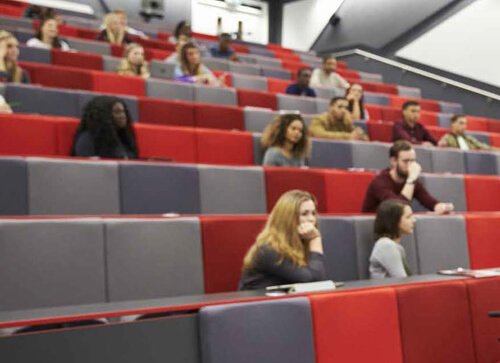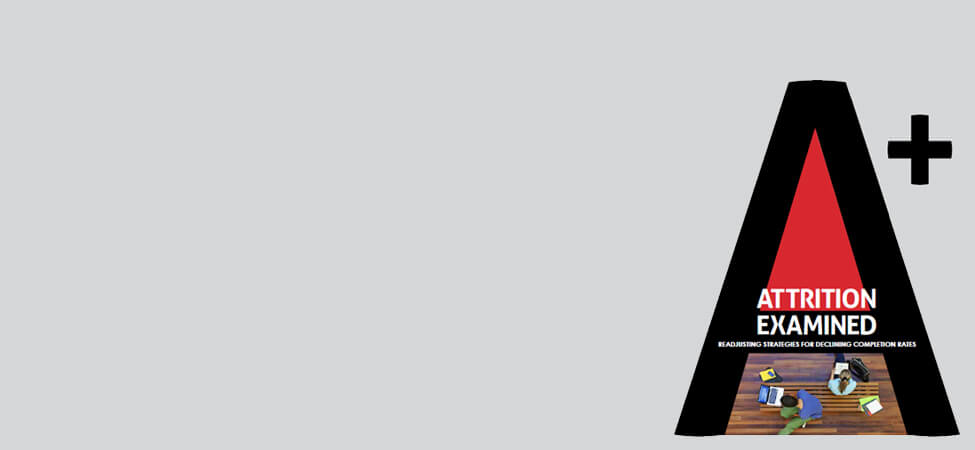Enrollment rates may finally be leveling out after several years of decline at some schools. But even for those schools, there’s yet another (and maybe an even more pressing) challenge facing them: retention rates. For most institutions, retention rates are still low and, for many, they’re steadily falling.
According to Forbes, only about two-thirds of students who enroll in college actually complete their degree. That means a good 30% of students drop out, never to return – but it doesn’t take into account another 12% who leave their original institution to transfer and complete their degree at a second school.
These high attrition rates not only affect schools’ reputations, they also cause severe financial strain on institutions, limiting the extent to which schools can advance their programs and offerings. For as long as retention rates lag, institutions will be held back by high costs and low ROI. So, what can be done to retain students longer?
These are funds that could be used to develop new programming, to extend technological advancements to reach a new generation of tech-minded students, to funnel into new marketing campaigns that will increase enrollment. Yet instead, these funds will never be seen by schools as students drop out before their degree is complete.
In addition to this lost revenue, there’s also a cost to attrition that hasn’t been quantified: the money lost in marketing to students and enrolling them, only for them to fall off the wagon. Many schools’ low marketing ROI can be attributed in part to high attrition, as the students who don’t complete degrees cost money to enroll but never deliver a profitable return.
The problem seems dire, and it certainly is significant. But before we make any attempts at solving the problem, there first needs to be an assessment of the catalysts behind the attrition rate.
The Student Erosion
It’s often hard to pinpoint a specific cause for attrition rates, as students typically have very individualized reasons for leaving a school. However, the main causes of attrition could be chalked up to four generalizations.
COST. One of the biggest reasons students give for dropping out is the rising price associated with obtaining a degree. The cost of tuition and fees has steadily risen over the years, and unfortunately financial aid has not kept pace (Inside Higher Ed).
In an increasingly cost-conscious generation of students, the sticker price of education can be a turnoff, especially when there isn’t adequate financial aid or parental support. Thus, even many students who do enroll find themselves dropping out before completion, as they aren’t confident their eventual career paths will outweigh the cost of their degree.
STRESS. NBC News recently noted that college counselors are seeing a rising number of students who are suffering from stress, depression or anxiety. Typically these mental health issues stem from the rigorous academic demands and difficulties associated with transitioning to a college setting. For other students, particularly newtraditional students who are older and trying to manage other responsibilities, maintaining a healthy work-life-school balance is an incredible challenge that may lead to heavy stress.
And unfortunately for a portion of these students, the stress takes a toll that causes them to leave school – some only for a period of time, others for good.
LACK OF DIRECTION.
There’s a steep learning curve for students entering a school for the first time. They often need guidance in particulars like signing up for classes and activities, figuring out financial aid, finding a tutor when one is needed and so forth. But when active support and direction are not readily available, students are more likely to drop off after a period of time.
While the reasons we cover here may be some of the most-cited for student attrition, the fact remains that these are merely generalities, and there are far more individual catalysts for dropout beyond this scope. Thus, even if schools were to implement programs to directly counter these specific problems, attrition would continue to be a perennial battle. So, rather than dealing with these external causes, schools need to look deeper into the matter and begin at the source: enrollment.
From the Outset: Developing Models for Improved Retention
Surprising as it may sound, retention starts even before a student sets foot on campus. It starts with data.
Through data-gathering strategies, institutions can examine those students who enroll, succeed and graduate – characteristics analogous with the phrase “highest lifetime value (LTV)” used frequently in ROI-based marketing. Their characteristics become the model off of which personas can be built.
Shaped by this input, targeted digital campaigns help find students that best fit these personas (i.e., “lookalike” audiences) and, thus, are far more likely to have higher retention and graduation rates.
From here, marketing efforts nurture these inquiries into solid enrollments that have a greater potential of becoming future graduates.
Yet finding the “ideal-fit” student demographic is only half the battle. In order to continue boosting retention, efforts have to continue throughout the student’s lifecycle. This is where data-based retention programs come into the mix.
Recently, some schools have begun collecting data on the activities, grades and attendance of current students. Analyzing patterns in this data helps inform the school of individuals whose behaviors are shared by others who have failed or dropped out, thus allowing counselors and advisors to step in pre-emptively to offer support and guidance.
In addition to this proactive system, schools may also see a decrease in attrition when oncampus support is emphasized and fostered. By having advisors and professors take active roles in reaching out to students, ensuring expectations are clearly defined, students become more confident and secure in their school trajectories. And, when this is combined with a strong sense of community through clubs, activities or organizations, the end result is a student body that is ready to succeed and push forward in their education.

A PLAN FOR THE FUTURE
Though attrition is often thought of as a risk only after a student enrolls, the truth is that retention begins long before the moment of enrollment, and must be fostered through each step in the student journey. Well-rounded data modeling will be just as critical as student experiences – a cooperation of digital strategies, along with in-person connection and support. Only with these two in tandem can attrition be fought and lifetime value increased.

